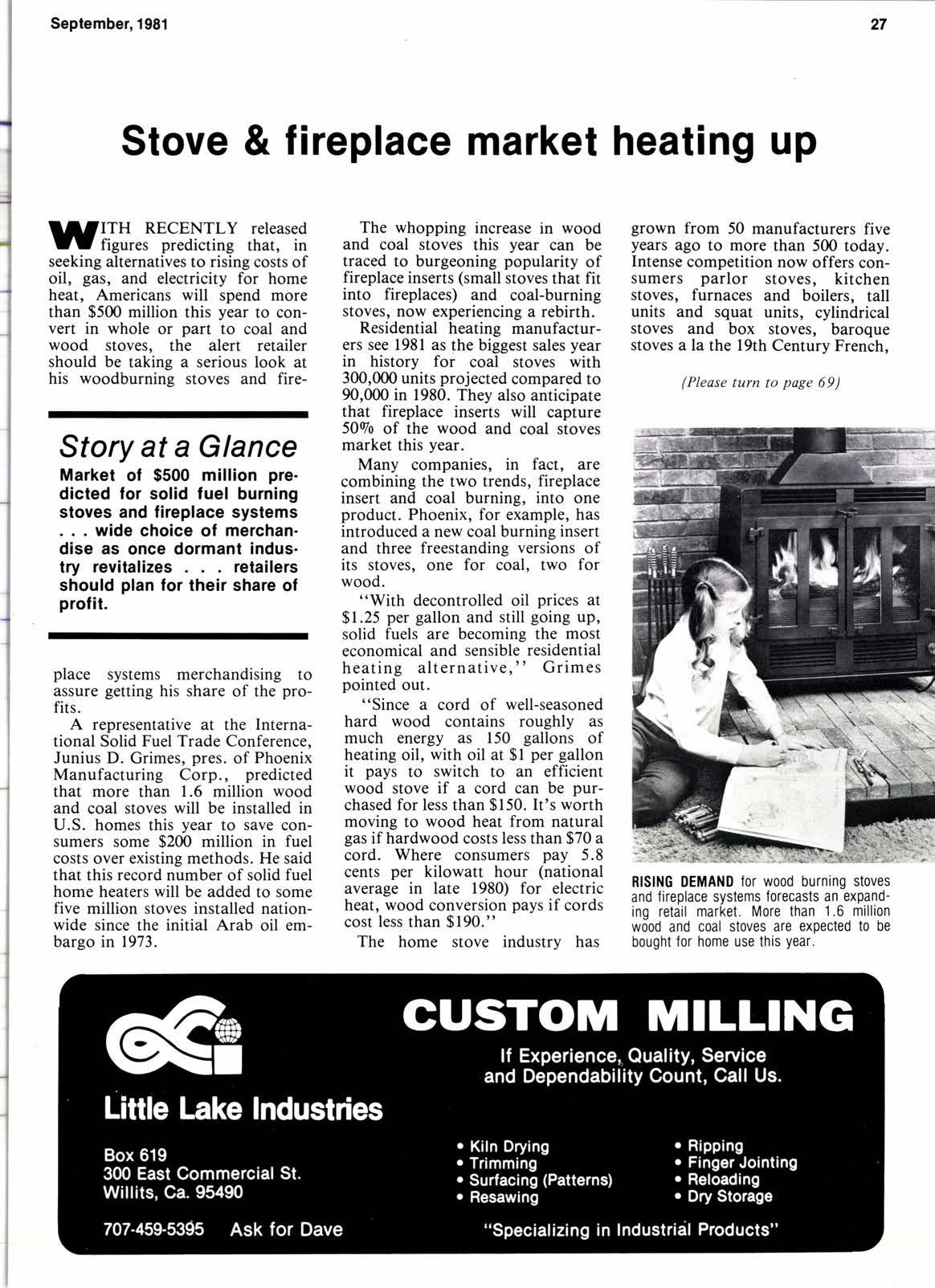
1 minute read
Stove & fireplace market heating up
lltITH RECENTLY released
UU figures predicting that, in seeking alternatives to rising costs of oil, gas, and electricity for home heat, Americans will spend more than $500 million this year to convert in whole or part to coal and wood stoves, the alert retailer should be taking a serious look at his woodburning stoves and fire-
Story at a Glance
Market of $500 million predicted lor solid fuel burning stoves and lireplace systems wide choice of merchan. dise as once dormant indus. try revitalizes . . retailers should plan for their share of profit.
place systems merchandising to assure getting his share of the profits.
A representative at the International Solid Fuel Trade Conference, Junius D. Grimes, pres. of Phoenix Manufacturing Corp., predicted that more than 1.6 million wood and coal stoves will be installed in U.S. homes this year to save consumers some $200 million in fuel costs over existing methods. He said that this record number of solid fuel home heaters will be added to some five million stoves installed nationwide since the initial Arab oil embargo in 1973.
The whopping increase in wood and coal stoves this year can be traced to burgeoning popularity of fireplace inserts (small stoves that fit into fireplaces) and coal-burning stoves, now experiencing a rebirth.
Residential heating manufacturers see l98l as the biggest sales year in history for coal stoves with 300,000 units projected compared to 90,000 in 1980. They also anticipate that fireplace inserts will capture 5090 of the wood and coal stoves market this year.
Many companies, in fact, are combining the two trends, fireplace insert and coal burning, into one product. Phoenix, for example, has introduced a new coal burning insert and three freestanding versions of its stoves, one for coal, two for wood.
"With decontrolled oil prices at $1.25 per gallon and still going up, solid fuels are becoming the most economical and sensible residential heating alternative, " Grimes pointed out.
"Since a cord of well-seasoned hard wood contains roughly as much energy as 150 gallons of heating oil, with oil at $l per gallon it pays to switch to an efficient wood stove if a cord can be purchased for less than $150. It's worth moving to wood heat from natural gas if hardwood costs less than $70 a cord. Where consumers pay 5.8 cents per kilowatt hour (national average in late 1980) for electric heat, wood conversion pays if cords cost less than $190."
The home stove industrv has grown from 50 manufacturers five years ago to more than 500 today. Intense competition now offers consumers parlor stoves, kitchen stoves, furnaces and boilers, tall units and squat units, cylindrical stoves and box stoves, baroque stoves a la the l9th Century French,
(Please turn to page 69)











